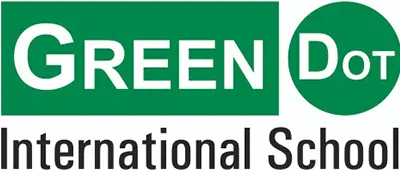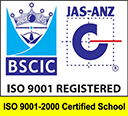Computers are an essential part of our daily life. From simple calculations to complex problem-solving, computers help us in countless ways. Understanding the types of computer is important for students and beginners as it gives insight into how technology works and the different purposes each computer serves. Students in the best schools in Anekal Taluk can benefit from learning about computers early, as it builds a strong foundation for future studies.
In this guide, we will explain the main types of computer, their examples, uses, and features in simple English.
What is a Computer?
A computer is an electronic device that processes data to perform tasks. It receives input, processes it, stores information, and produces output. Computers make tasks easier, faster, and more accurate. There are many different types of computer, each designed for specific purposes. Learning what is computer helps students understand how technology impacts our lives.
How Many Types of Computer Are There?
Computers are generally classified based on size, speed, purpose, and functionality. There are five main categories of types of computer: supercomputers, mainframe computers, minicomputers, personal computers, and microcomputers. Each type has its own features, advantages, and uses in various fields.
Supercomputer
Supercomputers are the most powerful computers in the world. They can perform trillions of calculations per second. These computers are used for complex scientific calculations, weather forecasting, space research, and simulations. Supercomputers are very expensive and are used in research institutes or government organizations.
Examples include IBM Summit, Fugaku, and Cray-2. Supercomputers have high-speed processors, massive storage, and advanced cooling systems. Understanding supercomputer is important for students studying technology and science because it shows the potential of computing power.
Mainframe Computer
Mainframe computers are large computers used by businesses, banks, and government offices to process large amounts of data quickly. They can handle thousands of users simultaneously without slowing down.
Mainframe computers are reliable, secure, and can store huge volumes of information. Examples include IBM zSeries and Unisys ClearPath. They are used in industries for payroll processing, transaction handling, and inventory management. Mainframe computers show how types of computer can serve business and enterprise needs efficiently.
Minicomputer
Minicomputers, also known as mid-range computers, are smaller than mainframes but still powerful. They are used in medium-sized businesses and organizations for specific tasks like database management or scientific calculations.
Examples include DEC VAX and IBM AS/400. Minicomputers are cost-effective compared to supercomputers and mainframes, making them suitable for organizations that need computing power but have limited budgets. Minicomputers are a key example of different types of computer that balance performance and affordability.
Personal Computer (PC)
Personal computers are the most common type of computer used by individuals for personal or office work. PCs are versatile and can run various software applications. They include desktops and laptops, each serving slightly different purposes.
Desktops are used at home or offices for tasks like browsing, document creation, gaming, and learning. Laptops are portable PCs that allow students and professionals to work on the go. Understanding personal computer is essential for beginners because it shows how technology can be adapted for daily life.
Laptop Types
Laptops come in various types to meet different user needs. Laptop types include ultrabooks, gaming laptops, 2-in-1 laptops, and standard notebooks.
- Ultrabooks are thin, lightweight, and ideal for students and professionals.
- Gaming laptops are powerful with high-end graphics for gaming and multimedia tasks.
- 2-in-1 laptops can convert into tablets, offering flexibility.
Learning about laptop types helps students choose the right computer based on performance, portability, and purpose.
Desktop Computer
Desktop computers are PCs designed to stay in one place. They are suitable for offices, schools, and homes. Desktops usually have separate monitors, keyboards, and CPUs.
They are powerful, easy to upgrade, and ideal for tasks like graphic design, coding, and multimedia production. Understanding desktop computer is important for students learning about computer hardware and software. Desktops show how types of computer can be adapted for both personal and professional use.
Tablet Computer
Tablets are portable touch-screen computers that are smaller than laptops. They are widely used for reading, note-taking, browsing, and educational apps. Tablets combine features of laptops and smartphones, making them user-friendly for students and casual users.
Examples include iPad, Samsung Galaxy Tab, and Microsoft Surface. Tablets are an important part of different types of computer that make technology accessible and mobile.
Types of Memory in Computer
Memory is a key component of all types of computer. It determines how fast and efficiently a computer can process data. There are two main types of memory:
- Primary Memory (RAM and ROM): Temporary storage for running programs and data.
- Secondary Memory (HDD, SSD, USB drives): Permanent storage for files, applications, and operating systems.
Understanding types of memory in computer is important for students to grasp how computers store and retrieve information.
Embedded Computer
Embedded computers are small, specialized computers integrated into devices like washing machines, cars, and medical equipment. They perform dedicated functions and are not used like regular PCs.
Examples include microcontrollers in smartphones or smart TVs. Embedded computers show how different types of computer are applied in everyday gadgets and industrial equipment.
How Computers Impact Daily Life
Computers are everywhere – in homes, schools, hospitals, banks, and offices. Each type serves a specific role:
- Supercomputers help scientists with research.
- Mainframes manage business transactions.
- PCs and laptops support learning and work.
- Tablets and embedded computers make devices smart and interactive.
Knowing types of computer helps students understand technology’s influence on education, work, and communication.
Conclusion
Understanding types of computer is crucial for students, beginners, and anyone interested in technology. From supercomputers to personal PCs, each type has unique features, applications, and benefits. By learning about different types of computer, students can choose the right device for their needs, improve their computer literacy, and explore future technology opportunities. This also helps in developing what is reading skills, as understanding technical information requires careful reading and comprehension.
FAQs
There are five main types of computer: supercomputers, mainframes, minicomputers, personal computers, and microcomputers. Each serves different purposes.
A computer is used to process data, perform calculations, store information, and support tasks like learning, work, and entertainment.
Types of memory in computer include primary memory (RAM and ROM) and secondary memory (HDD, SSD, and USB drives).
A personal computer is a computer used by individuals for personal or office tasks. It includes desktops and laptops suitable for everyday activities.
Laptop types include ultrabooks, gaming laptops, 2-in-1 laptops, and standard notebooks, each serving specific performance and portability needs.




